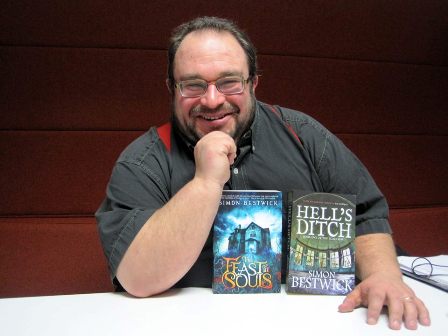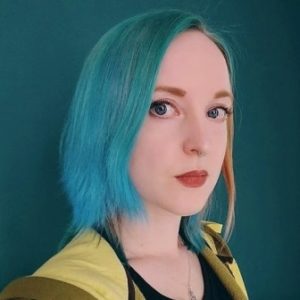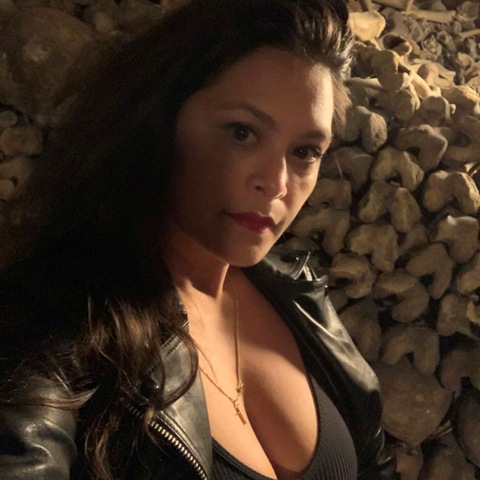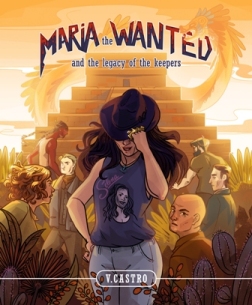Welcome back for this week’s author interview! Today I’m thrilled to spotlight Cina Pelayo. Cina’s an accomplished and award-winning poet and fiction author with numerous books including Poems of My Night, Santa Muerte, Loteria, and The Missing.
Over the summer, Cina and I discussed her inspiration as an author, her gorgeous covers by Abigail Larson, and her future writing plans.
A couple icebreakers to start: when did you first decide to become a writer, and who are some of your favorite authors?
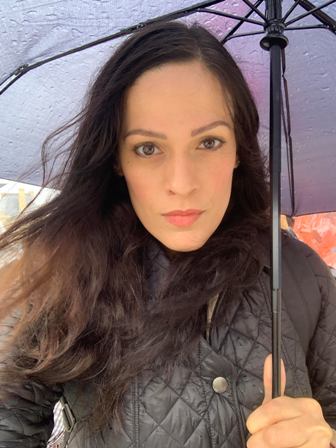 I started writing in high school, but non-fiction. My undergraduate degree is in journalism and I worked as a freelance journalist for about 10 years before moving on to fiction writing. I started writing fiction while pursuing an MFA. I have always loved horror. I watched my first horror movie at 5 and was pretty obsessed with all things horror to the point that my mother consulted with her priest about my obsession with horror movies, books, magazines and fascination with the occult. She wound up throwing away my Ouija board, but I put my foot down on horror movies and books and she left me alone from there thinking it was a phase. I guess it wasn’t a phase?
I started writing in high school, but non-fiction. My undergraduate degree is in journalism and I worked as a freelance journalist for about 10 years before moving on to fiction writing. I started writing fiction while pursuing an MFA. I have always loved horror. I watched my first horror movie at 5 and was pretty obsessed with all things horror to the point that my mother consulted with her priest about my obsession with horror movies, books, magazines and fascination with the occult. She wound up throwing away my Ouija board, but I put my foot down on horror movies and books and she left me alone from there thinking it was a phase. I guess it wasn’t a phase?
What draws you to horror? Do you remember your first experience with the genre, and do you have a favorite film or book that serves as your horror go-to?
I live in inner city Chicago – not the suburbs where most people live who say they live in Chicago. I’ve seen it all. Gangs. Guns. Drugs. My elementary school friend is serving life for murder. A classmate from high school was paralyzed days before graduation. I’ve covered stories as a journalist where I’ve showed up to the scene and the body is still there on the ground for all to see. Those things don’t leave you. They become a part of you. That together with my mother’s wild religious superstitions (We once had a quasi-exorcism in our house) have stayed with me. My mother has also had her fair share of exposure to horrific crimes that she has shared with me. A neighbor girl from her town was abducted and raped and killed and her dismembered body was discarded in her parent’s trash can. My mother also recalls people’s fears of witches and the occult from her town and she’s shared these stories with me. My father has shared stories of strange occurrences from his town as well.
I wish I could say that fiction has been my sole inspiration, but it’s really been non-fiction that has influenced my fascination with the horror genre. Why do people do horrible things to one another? What is their motivation?
In terms of my first exposure to the horror fiction genre it’s seeing A Nightmare on Elm Street when I was about 5-years-old while my brother was baby sitting me. Freddy is forever my first and favorite. In terms of a horror book that is my go-to, it’s The Exorcist. When I think of all of the horror novels that I wish I could write it would be that one.
You’ve written both fiction and poetry. Is your approach to writing the same or different depending on the medium? Is there one you prefer over the other?
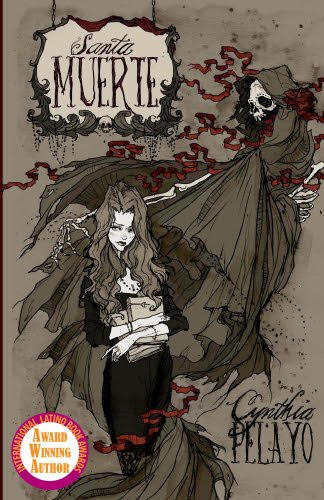 Different. With fiction I am much more organized and structured, and sometimes it’s a really grueling experience with editing and rearranging scenes and understanding the logic and motivation behind what is going on. I think of it mathematically sometimes, if this plus this then it equals this, and then I wind up overthinking what is going on, how I am saying it and even where it’s located in the story. Sometimes that overthinking stunts me, I freeze, and I just stall writing.
Different. With fiction I am much more organized and structured, and sometimes it’s a really grueling experience with editing and rearranging scenes and understanding the logic and motivation behind what is going on. I think of it mathematically sometimes, if this plus this then it equals this, and then I wind up overthinking what is going on, how I am saying it and even where it’s located in the story. Sometimes that overthinking stunts me, I freeze, and I just stall writing.
With poetry, it’s much looser and I feel more at peace with what I am doing. It feels closest to painting for me when I write poetry. Yes, there is some editing and rearranging of things like with fiction, but I really enjoy writing poetry. It’s musical. It’s beautiful, and it’s much more personal for me.
You recently were a judge for the HWA Poetry Showcase Volume 6 alongside Christa Carmen and editor Stephanie M. Wytovich. What was that experience like, and do you foresee more editing work in your future?
Stephanie and Christa are two of the most wonderful horror writers working in our genre today. Both of them are incredibly smart and talented and just very pleasant to be around and talk to. I enjoy their work tremendously and I just enjoy them as overall people. It was a joy to be able to work on this project and I still can’t believe I was able to do that.
I’m not really an editor. I am in awe of those who edit. I’ve been trying to revive my indie press (Burial Day) for some time and that’s probably the most editing I will allow myself to do so that I can focus on creating.
Your books all have such beautiful covers! What can you share about the process of working with your cover artists?
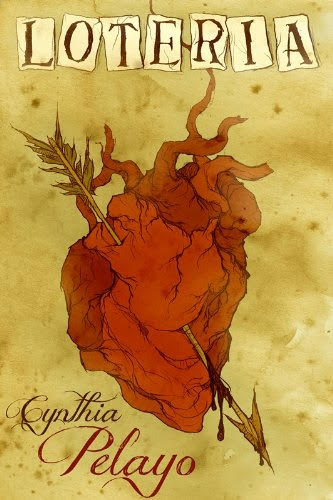 Thank you but I can’t take credit for that. That is really the work of Abigail Larson. She’s a genius and I have been working with Abigail for about 10 years now. She is extremely busy (which is fantastic) and so I am lucky when she has availability. I usually send her a few ideas… all notes and not visuals because I really want her to come at it through her lens. She’s brilliant and always creates something perfect for my work.
Thank you but I can’t take credit for that. That is really the work of Abigail Larson. She’s a genius and I have been working with Abigail for about 10 years now. She is extremely busy (which is fantastic) and so I am lucky when she has availability. I usually send her a few ideas… all notes and not visuals because I really want her to come at it through her lens. She’s brilliant and always creates something perfect for my work.
Out of your published work, do you have a personal favorite?
Poems of My Night is the most personal. Santa Muerte is my first published work so that will always be a special piece for me. Loteria was my thesis, so it’s special because of that. I have really enjoyed my short stories lately. I have one coming out soon for a Puerto Rico charity anthology edited by Angel Luis Colon from Down and Out Books – Pa Que Tu Lo Sepas, and that is my favorite short story I have written in some time. I also really like the short story I wrote for She’s Lost Control.
What projects are you currently working on?
I feel like I have been editing this novel for two years… and that’s because I have. I’m trying to wrap up a detective-horror novel right now. After that, I’m likely going back to my YA horror roots but I’m not completely certain yet.
Tremendous thanks to Cina Pelayo for being part of this week’s author interview series. Find her online at Twitter and her website!
Happy reading!

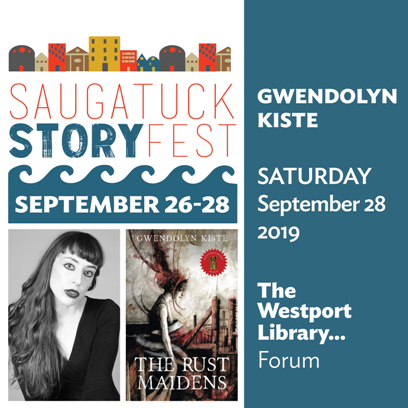
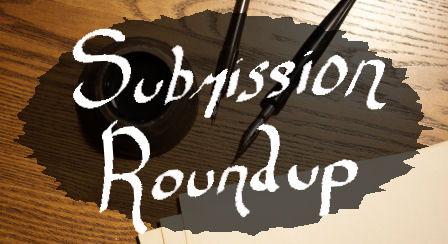 Latinx Screams
Latinx Screams